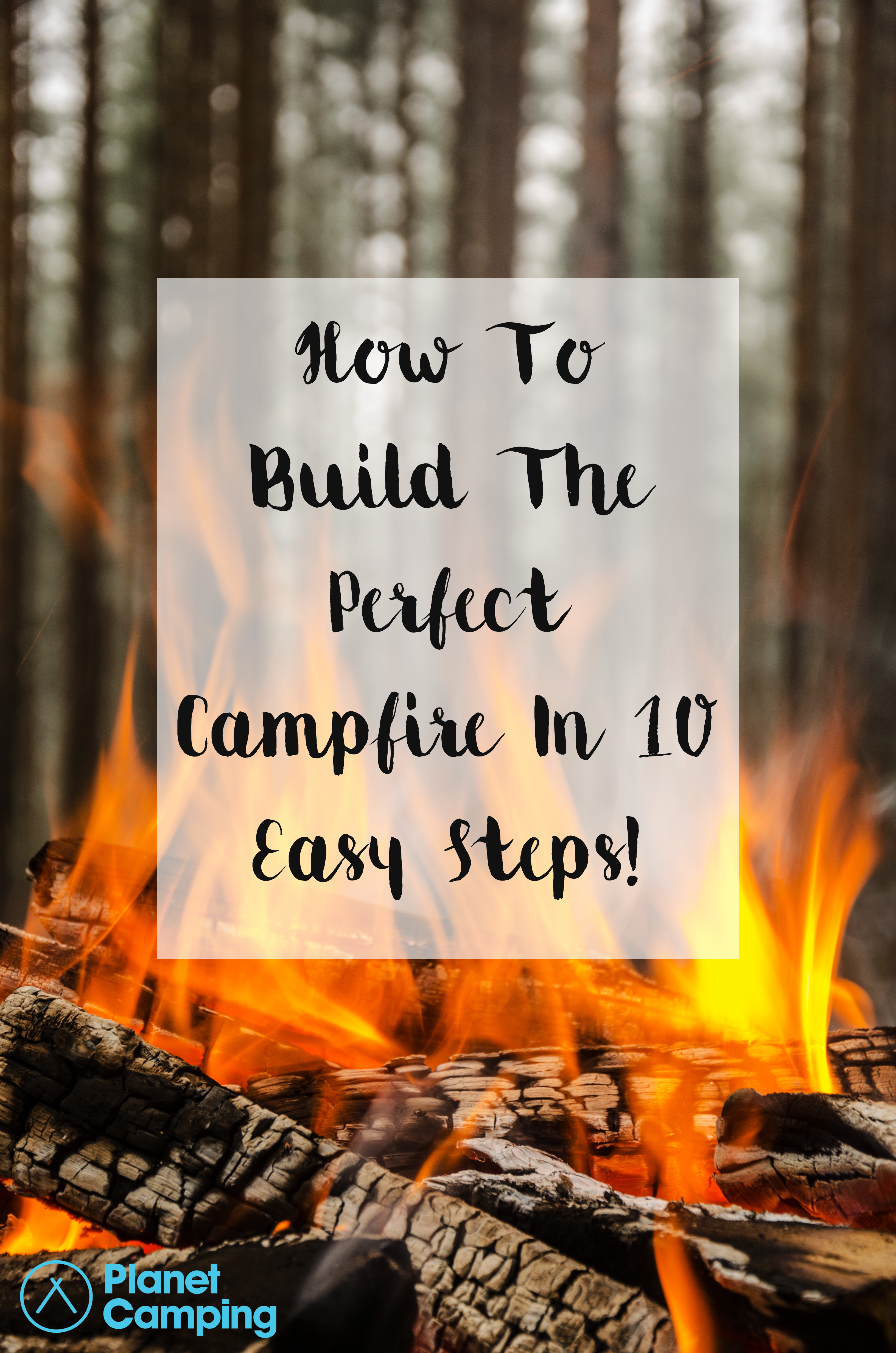
When we think of camping, we conjure up an image of a pyramid shaped fire, surrounded by giant logs to sit on and marshmallows stuck on the end of a stick, cooking over the open flames. Building a fire and enjoying its warmth and colours adds to the richness of the camping experience and is a great way to end a day.
Building a fire can be quite tricky for a novice and can cause frustration if you can’t get it lit or the flames keep on dying. But don't despair, with a few handy techniques and a bit of patience, anyone can light a fire reliably and quickly. Remember a couple of key things, like the fire triangle and the old adage 'you can't light a log with a match'. Here is how to create a controllable campfire in 10 easy steps.
1.) Choose a good spot

Safety first. Never start a fire within three meters of your tent, a tree or on peaty ground which can catch fire. When looking for the perfect campfire spot, choose a bare flat area. Avoid starting a fire by a boulder: it’ll leave black sooty marks on it.
2.) Prepare your chosen spot
Brush away all leaves and grass around your spot. If possible, dig a little into the ground to help contain the fire. Unless you’re using a fire bowl, collect some big stones and place them in either a circle or rectangle around your campfire spot. These will prevent the fire spreading once it’s lit. Find some flat stones and lay them inside the ring to protect the ground from the fire.
3.) Gather firewood
If you are in the wild, collect dry standing fallen tree branches and twigs from the woodland around your camping spot. Make sure to collect it methodically – build 3 or 4 piles according to the thickness of the wood – matchstick-thick twigs, pencil-thick twigs, branches and bigger bits of wood. You don't need to burn a whole log, and there usually isn't a need for branches thicker than two fingers' width. All fuel should be at least 20-30 centimetres long, so that you can handle it and place it easily onto the fire.
4.) Collect tinder
If you don’t have any paper or prefer to start the fire in a more traditional way, you’ll need some easily combustible materials to get the flames going. Dry leaves and bracken, old man’s beard lichen or birch bark are all good items. You can also take tinder with you in case you can’t find any; a piece of old cycle inner tube works well, as does newspaper.
5.) Keep a few litres of water at hand.

Fingers crossed, your lovely and cosy campfire won’t cause any issues, but in case it gets out of control and you need to shut it down quick, keep a few bottles of water at hand. You can pour it over the flames if the situation gets dangerous.
6.) Create a cross of kindling.
Place your tinder or fire starter in the middle of the fire ring. Gather two big bundles of matchstick thick twigs and cross them over, and place them on top of the tinder, allowing access to the tinder, and plenty of space for air to reach all of the fuel.
7.) Light it up.
Light the kindling with a match or a fire steel. Make sure some easily combustible items are touching the twigs so that these can catch fire.
8.) Add thicker fuel

Once the flames get going, add more twigs and pencil-thick branches. It will take a while for the fire to really settle, but once it’s been going for a good 5/10 minutes, you can slowly start adding bigger branches. Make sure to maintain the pyramid shape while you do this, so that air can get to the fuel.
9.) Look after it

You’ll have to always keep an eye on the fire and keep on feeding it through the evening. If it gets smoky, add small twigs and kindling to raise the flames. If it threatens to die, blow gently and steadily onto the low centre of the pyramid from the side, keeping your head parallel to the ground. This will ‘wake up’ the hot ashes.
10.) Let it die down

When you’ve decided you’re going to sleep, stop adding fuel to the fire and let it die down. Before going to bed, pour plenty of water on the ashes to make sure the fire is completely out and won't reignite in the night.
Clean up!
The next day (or the last day of using the campsite) you’ll want to clear the space you’ve used to make sure you leave no trace of having been there. Start off with taking the stones back to where you’ve got them (or scatter them around). Then disperse the cold ashes or, even better, bury them in the ground. The next visitors or the animals in the forest will appreciate you taking the time to do this.
Building a fire is often forbidden in the UK in order to protect the environment, so make sure it is permitted where you’re staying – ask the campsite’s staff or research the area.
'How to Build the Perfect Campfire in 10 Easy Steps' is written by Elena from thehealthyveggie.com/ / Twitter: @ElenaManighetti
Want to write for Planet Camping? Get in touch here!